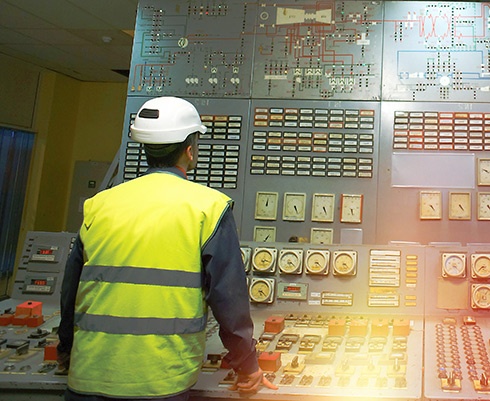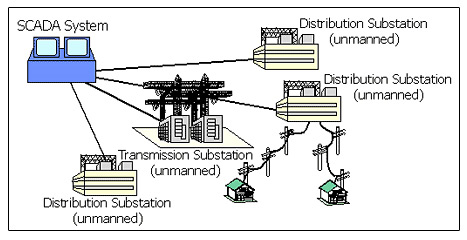Improving Network Oversight with SCADA & Substation Automation
In today’s information age, everything in our lives, both as engineers and consumers, is about data. From big data and smart cities, phones and cars to the Industrial Internet of Things (IIoT), we have access to an incredible amount of information ready to be tapped everywhere we turn. And we’re starting to leverage it in a way that not only makes our lives easier, but shapes markets through new capabilities and opportunities for innovation.
There’s been a big shift in the industrial sector specifically. Settings that operated mechanically and linearly are now considered data centers, loaded with sensors and other devices that talk to each other and capture the insights we need to make informed operational and business decisions and perform at full potential.
Supervisory control and data acquisition (SCADA) systems have long been used in industrial applications to control and automate manual processes and capture this data. What you probably think of when you hear the word SCADA – mainframe systems with limited ability to send and receive data simultaneously – is actually a thing of the past. With the rise of the IIoT, cloud and advanced analytics, these systems are becoming even smarter, breaking down information siloes with real-time data transfer and feedback. No longer a basic system used to collect data, SCADA is becoming intertwined with industrial automation.
This trend toward smart systems that offer more control, feedback, automation and human interface is benefitting any remote application that produces a lot of data: oil and gas, transportation, water-wastewater, manufacturing and power transmission and distribution. Engineers across all these spaces are using smart SCADA systems as visual tools to check on their operations remotely and in real-time, which helps them understand what is going on within their network and take action should the data display a fault in the system.

Industrial automation systems no longer require manual controllers when SCADA is integrated into a substation’s control network.
5 Ways SCADA Is Being Used for Substation Automation
In substation automation applications, the type of asset control offered by SCADA collects data from line sensors and other connected equipment on the power grid. It’s then streamed back to a central control room where the information is analyzed and decisions are made automatically.
For example, if the voltage level is outside of a normal range, or components are running hot, an alarm sounds and the team responsible can fix the issue accordingly – and in some cases the system self-heals. SCADA allows teams to see everything within the network live, including where failure occurs, and provides monitoring and control both in data networking and acquisition.
SCADA enables substation engineers to:
- Monitor analog data, low currents, bus voltage, power, intelligent devices and more.
- Communicate better with relays, meters, and expert controls within the substation or control cabinets.
- Access systems remotely, which means teams can see what’s happening within the application and control the system without being physically present.
- Reduce engineering and maintenance costs by integrating plant devices.
- Mitigate risk and improve quality through centralized control and process data analysis, which results in preventative and predictive system programming.
If a team sees something that has defaulted, they can examine the controller in question without having to go into the field to manually find the problem. SCADA is a system that is built around not just seeing a bunch of numbers on the screen, but as a smart system that can look across all components and pieces of the network and make decisions based on whatever it is your team programmed for automation. Teams can now handle multiple stations and pieces simultaneously – a big move forward for industrial applications.

Network diagram showing how SCADA is used in substation automation. (Source: Tepco)
Preventing Problems with SCADA
Avoiding and preventing system failures is one of the biggest challenges for any industrial automation team – and is just one of the pain points SCADA can help with. Whether SCADA is already integrated into your substation control network or you’re looking to implement it, there are a few ways the system can ensure network health and longevity. These include:
- Quick return online if something faulted; teams don’t have to go out to the field and find the issue manually
- Live monitoring and automation for preventative measures; teams can figure out why something happened and what the parameters were through the data captured in SCADA
- Prevent the fault before it happens; SCADA systems give teams the ability to look at historical data
- Trend analysis and capturing historical data also helps maintain desired power factors, voltage levels and other distribution system parameters
- Dynamic dashboards provide meaningful information in a visual format for decision makers
Advancements of SCADA and What’s Next
When you consider where we started with SCADA, we’ve come a long way. From a basic framework for collecting data to a more sophisticated system that offers real-time feedback, the technology has become increasingly innovative. Now teams have new capabilities to monitor, gather and examine data in real time and make critical operational and business decisions much more quickly.
In the future, the use of SCADA in substations and control networks will provide even greater automation and oversight to control room operators and system engineers. SCADA systems will allow for much more insight into the lifespan of machinery and integration with cloud based apps and services which can be designed for specific vertical markets. As the system of the future, SCADA provides greater versatility to adopt the latest software platform technologies and for Industry 4.0 compatible monitoring systems. With these developments, it’s important engineers understand how to design their networks for these shifts in industry standards so they can maximize their SCADA systems to their fullest potential.
![System.String[]](https://assets.belden.com/transform/7d9664bf-965d-4965-a32d-382a9829c061/Author-Belden-Logo-sm-blue-2020-10?io=transform:fill,width:300,height:300)